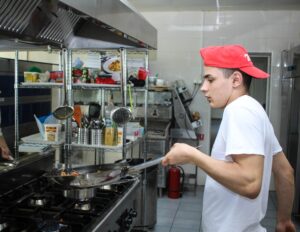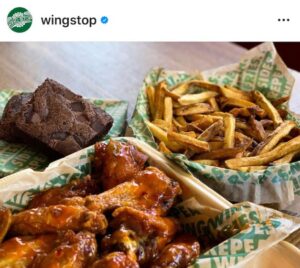Even before the pandemic hit, ghost kitchens were popping up around the country and were shifting the dining experience as we know it. Due to pandemic guidelines, restaurants have turned into ghost kitchens nearly overnight. How are they impacting the industry and will they last even after COVID-19?
What are Ghost Kitchens?
Simply, ghost kitchens, also known as virtual kitchens, are bare-boned restaurants without a storefront. Stripped of traditional dining spaces, they serve as large functional kitchens to prepare food for delivery. Various restaurants can operate out of the same space. For example, around this time last year, DoorDash launched a shared ghost kitchen offering four diverse restaurants within the same space. Through their DoorDash kitchen, customers could order from any combination of restaurants in the same order and have it delivered at once, giving consumers more customization and control over their dining experience. Other restaurants may prefer to host their own virtual kitchens while utilizing third-party delivery platforms.
No dock? No problem. Checkout our DSD Program.
Why are they trending?
A major benefit for restaurants who transition to ghost kitchens is by cutting their operating costs with fewer employees and less square footage. Companies can streamline operations and focus on creating quality menu items, when they subtract washing dishes and setting tables. For those just starting out, this model cuts cost and excels the process to market and for existing restaurants, executives can expand to new areas or test new concepts, at lower risks.
Now, the ghost kitchen trend has almost become a necessity for nearly every restaurant around the globe. With the emergence of COVID-19 and restricted dine-in guidelines, many restaurants closed their doors to foot traffic, resorting to delivery services like Uber Eats, Grubhub and DoorDash or temporarily closing completely. Ghost kitchens offer the contactless customer model that only focuses on take-out services. These flexible models are also inviting chefs to offer specials and experiment with new ingredients and with digital menus, item changes are made with ease.
The possibilities are endless! Sebes says: “Launch a new concept exclusively in a delivery app. Run multiple concepts from a single location. Meet demand for constant variety. Ghost kitchens and today’s digital-first world make all of this more accessible and manageable. The chefs are constantly getting feedback as part of the delivery app, allowing them to pivot or tweak. If something doesn’t work, move on to try something else without much financial loss.”
Now & Post-pandemic
Globe Newswire said: At the onset of COVID-19, Wingstop Inc., Dallas, moved quickly to close its dining rooms and shift to 100% off-premises. The company was well-positioned based on its pre-COVID investments in digital and technology platforms, allowing for the brand to seamlessly shift from 80% off-premises and adapt to the change in consumers’ dining behaviors. The resiliency of Wingstop was demonstrated in its April 2020 same-store sales growth of 33.4% and 65% digital sales, which included a delivery sales mix of more than 30% of total sales. In efforts to continue this growth trajectory and adjust to the changing landscape, the company opened its first domestic ghost kitchen in Dallas on July 1. It spans less than 400 square feet, compared to Wingstop’s average restaurant footprint at approximately 1,750 square feet, while offering the same full menu.
“We have a goal to digitize 100% of transactions as we drive to become a top-10 global restaurant brand and we believe ghost kitchens are a great step for the brand as delivery and digital sales continue to increase,” says Charlie Morrison, chairman and CEO. The concept was the company’s answer to its customers’ appetite for adventure while acknowledging current travel limitations.
While no one knows exactly how the post-coronavirus world will fare for the restaurant industry, there is no denying that ghost kitchens remain a popular option. For full-service restaurants, they are counting the days to when they can throw open the doors and welcome back their customers. But as full-service restaurants look to expand into new areas, in what promises to be a challenging environment, it’s likely a ghost kitchen model will be on the list of considerations. For starters, ghost kitchens are built to naturally support social-distancing, which is likely to continue in some capacity long after stay-at-home mandates lift.
Sources:
https://www.bakemag.com/articles/13577-rising-trend-of-ghost-kitchens-spurs-innovation





Leave a Reply